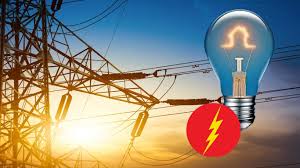
24X7 POWER SUPPLY
Details of State/ UT wise average daily hours of supply in the country, as reported by the States, is placed at Annexure.
Government of India launched schemes like Deen Dayal Upadhyaya Gram Jyoti Yojana (DDUGJY), Integrated Power Development Scheme (IPDS), Pradhan Mantri Sahaj Bijli Har Ghar Yojana (SAUBHAGYA) etc., to support States in achieving the objective of providing uninterrupted power supply to all households. Projects worth Rs. 1.85lakh crore were executed for strengthening the distribution system across States which includes works like new/upgradation of substations, new/ upgradation of HT & LT lines, agricultural feeder segregation, Aerial Bunched Cable and underground cabling etc. A total of 18,374 villages were electrified under DDUGJY and 2.86 crore households were electrified during SAUBHAGYA.
Further, Government of India launched Revamped Distribution Sector Scheme (RDSS) with the objective of improving the quality and reliability of power supply to consumers through a financially sustainable and operationally efficient Distribution Sector. The Scheme has an outlay of Rs. 3,03,758 crore with a Gross Budgetary Support of Rs. 97,631 crore from Government of India over a period of five years from 2021-22 to FY 2025-26. Projects worth Rs. 2.62 lakh crore for distribution infrastructure works and smart metering works have been sanctioned under the scheme.
In addition to above, Government has taken following initiatives to achieve uninterrupted power supply across the country:
(i). 2,14,237 MW of generation capacity were added in the last ten years. Generation capacity increased by 79.5% from 2,48,554 MW in March 2014 to 4,46,190 MW in June, 2024.
(ii). 1,95,181 ckt kilometre of transmission lines were added since April, 2014 connecting the whole country into one grid running on one frequency. This has enabled to transfer 1,18,740 MW from one corner of the country to another.
(iii). Generation Capacity addition (under construction and identified) by 2032 as given below:
a) Thermal capacity of minimum 80,000 MW by 2032.
b) Hydro capacity of 25,010 MW by 2032.
c) Nuclear capacity of 14,300 MW by 2032.
d) Pump Storage Plants (PSP) capacity of 50,760 MW by 2032.
e) Small Hydro Capacity of 510 MW by 2032.
f) Solar Power Capacity of 1,43,980MW by 2032.
g) Wind Power Capacity of 23,340 MW by 2032.
Thus, total anticipated capacity addition by 2032 will be 3,37,900 MW.
As per Rule (10) of the Electricity (Rights of Consumers) Rules, 2020, the distribution licensee shall supply 24×7 power to all consumers. However, the Commission may specify lower hours of supply for some categories of consumers like agriculture. The Rules are universally applicable in the country.






